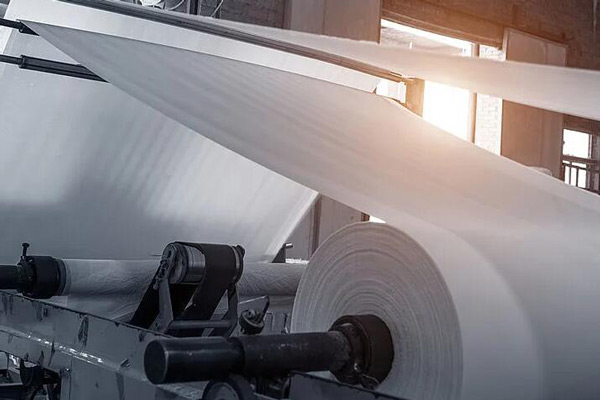Titanium dioxide is an inorganic compound with the chemical formula TiO2, and its appearance is white powder. It is non-toxic, best opacity, best whiteness and brilliance. TiO2 has many excellent properties, such as photocatalysis, semi-permanence, hydrophilicity, acid and alkali resistance, responsiveness to different visible light, weather resistance, and oxidation resistance. So titanium dioxide powder is widely used in plastics, coatings, paper, printing ink, chemical fiber, rubber, cosmetics and other industries. As an important white pigment and porcelain glaze, the amount of titanium dioxide accounts for more than 80% of all white pigments.
TiO2 titanium dioxide has two main structures: titanium dioxide rutile (R type) and titanium dioxide anatase (A type). And rutile TiO2 has a compact structure, is relatively stable, and has low optical activity, so it has good weather resistance. At the same time, rutile titanium dioxide has high hiding power and color reduction power, so it is widely used in high-end fields such as coatings, plastics, inks, papermaking, rubber, chemical fibers, cosmetics, etc. Compared with rutile TiO2, anatase titanium dioxide has relatively lower hiding power and whiteness, but has good dispersibility and is easy to process. And it is mainly used in low-end plastics, architectural coatings, paper and other fields. By the way, As a leading supplier and exporter in China, Fengbai company can supply these brands of titanium dioxide, such as Lomon, Billions, DONGFANG, PANGANG,etc. Please check the popular models below:
Hot Models: R-996,BLR-852,BLR-883,BLR-885,BLR-886,BLR-887,BLR-891,BLR-895,BLR-896,BLR-698,BLR-699,LR-108, LR-952,LR-961,LR-972,LR-982,TR52,TR5.
| Painting | Plastic | Prinking ink | Paper Making | ||||||
|---|---|---|---|---|---|---|---|---|---|
| Products | Indoor building paint | Outdoor building paint | Industrial coating | Master batch | Outdoor plastic | Table printing ink | Inner printing ink | Surface coating | Laminated paper |
| BLR-895 | optimization | optimization | general | ||||||
| BLR-896 | general | optimization | optimization | general | |||||
| BLR-891 | optimization | optimization | |||||||
| BLR-886 | optimization | ||||||||
| BLR-852 | optimization | optimization | |||||||
| R-996 | optimization | optimization | general | general | |||||
| BLR-698 | optimization | general | optimization | general | general | general | |||
| BLR-699 | optimization | optimization | general | general | |||||
| LR-972 | general | optimization | optimization | general | general | ||||
| LR-961 | general | optimization | general | ||||||
| TR52 | general | optimization | optimization | ||||||
| LR-982 | general | general | optimization | general | |||||
| TR53 | general | general | general | optimization | |||||
| LR-108 | optimization | ||||||||
| BLR-688 | optimization | ||||||||
| LR-952 | optimization | optimization | |||||||
| BLR-501 | |||||||||
| BLR-601 | |||||||||
Hot Models: R-298,R-248,R-249,R-258,CR340,CR350
Hot Models: R-5566,R-298,R-902,R-5567,R-5569
Main Uses of Titanium Dioxide (TiO2)




As a food white pigment, titanium dioxide can be used to color foods such as preserved fruits, jellies, fried foods, chocolate, etc. The usage should generally not exceed 1% of the weight of the food.
This chemical is non-toxic, and titanium dioxide is used to replace lead white and zinc white in almost all kinds of perfume powders. We only need to add 5% to 8% of titanium dioxide to perfume powder to get permanent white, making the perfume more smooth, adhesive, absorbent and covering.
Titanium dioxide for chemical fiber is mainly used as a matting agent. Because anatase titanium dioxide is softer than titanium dioxide rutile, titanium dioxide anatase is generally used. It does not need surface treatment, but some special varieties need surface treatment in order to reduce the photochemical effect of titanium dioxide and avoid fiber degradation under the action of titanium dioxide photocatalysis.
Main Performance Characteristics
Titanium dioxide (TiO₂) is an important inorganic compound with a variety of unique performance characteristics that make it widely used in many fields. Here are some of the main performance characteristics of titanium dioxide:
(1) High refractive index. TiO₂ titanium dioxide has a very high refractive index, which makes it an excellent optical material. In areas such as coatings, inks and plastics, it can provide excellent hiding power and color saturation.
(2) Chemical stability. This product is stable to most chemicals at room temperature, including acids, bases and many organic solvents. This gives it a long service life in applications such as coatings, pigments and catalysts.
(3) Photocatalytic properties. TiO₂ exhibits excellent photocatalytic properties under ultraviolet light. This property makes it widely used in areas such as environmental purification (such as degrading organic pollutants and killing bacteria) and energy conversion (such as solar cells).
(4) Ultraviolet absorption. Titanium dioxide can strongly absorb ultraviolet rays, so it is often used as an active ingredient in sunscreens and other sun protection products. It can effectively prevent ultraviolet damage to the skin and reduce skin aging and other related health problems.
(5) Semiconductor properties. Titanium dioxide is a wide bandgap semiconductor material with excellent electrical properties. It can be used as a key material in fields such as solar cells, sensors and photoconductors.
(6) Thermal stability. The titanium dioxide (TiO₂) can maintain stable performance even at high temperatures, which makes it widely used in fields such as high-temperature coatings, ceramics and glass.
(7) Non-toxic and harmless. It is a non-toxic and harmless compound that has a wide range of applications in fields such as food, cosmetics and medicine.
